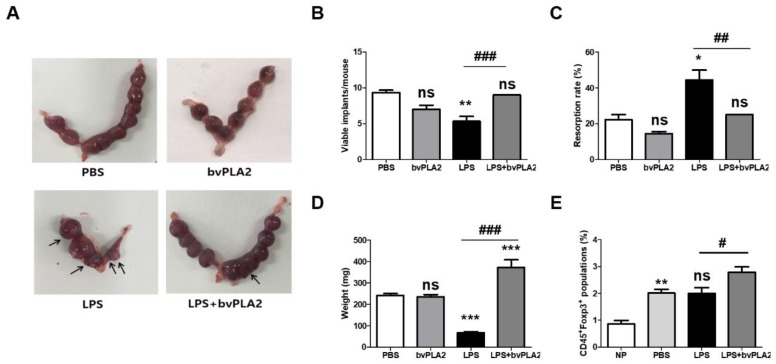Figure 1.
Effects of bee venom phospholipase A2 (bvPLA2) treatment on lipopolysaccharide (LPS)-induced fetal loss. One male mouse and two female mice were housed together for mating. The female mice were inspected the next morning, and the presence of vaginal plaque was designated gestation day (GD) 0.5. Next, 0.4 µg of LPS was injected intraperitoneally (i.p.) at GD 9.5. The LPS + bvPLA2 groups were treated with an i.p. injection of 0.5 mg/kg bvPLA2 once a week for two weeks prior to mating. Pregnant animals were sacrificed at GD 11.5 to investigate the pregnancy status. The fetuses and placentas were weighed and inspected for malformations. (A) Photographs of uterine horns represent the pregnancy status. The resorbed embryos were atrophied, and necrotic horns represent the pregnancy status (arrows). (B) Viable implants, (C) resorption rates, and (D) fetal weights are depicted. The fetal resorption rates were calculated as follows: number of resorptions/(number of viable fetuses + resorptions). (E) The percentages of CD45+Foxp3+ populations were determined from the uterine tissues. Significance: * p < 0.05, ** p < 0.01, and *** p < 0.001 vs. the PBS group; # p < 0.05, ## p < 0.01, and ### p < 0.001 vs. the LPS group; ns: no significance.

